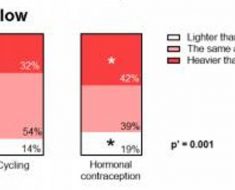A research team at the University of California, Riverside, has found that electronic cigarettes, often targeted to youth and pregnant women, produce a stress response in neural stem cells, which are critical cells in the brain.
Present throughout life, stem cells become specialized cells with more specific functions, such as brain cells, blood cells, or bone. Far more sensitive to stress than the specialized cells they become, stem cells provide a model to study exposure to toxicants, such as cigarette smoke.
Electronic cigarettes, or ECs, are nicotine-delivery devices that aerosolize nicotine and flavor chemicals through heating. Researchers do not yet understand how the chemicals in ECs might affect neural stem cells, particularly their mitochondria — organelles that serve as the cell’s powerhouses and are critical in regulating cell health.
Using cultured mouse neural stem cells, the UC Riverside researchers identified the mechanism underlying EC-induced stem cell toxicity as “stress-induced mitochondrial hyperfusion,” or SIMH.
“SIMH is a protective, survival response,” said Prue Talbot, a professor in the Department of Molecular, Cell and Systems Biology who led the research. “Our data show that exposure of stem cells to e-liquids, aerosols, or nicotine produces a response that leads to SIMH.”
The study, performed on Vuse, a leading EC brand, appears in iScience, an open-access journal from Cell Press.
“Although originally introduced as safer, ECs, such as Vuse and JUUL, are not harmless,” said Atena Zahedi, the first author of the research paper who received her doctoral degree in bioengineering this year. “Even short-term exposure can stress cells in a manner that may lead, with chronic use, to cell death or disease. Our observations are likely to pertain to any product containing nicotine.”
Zahedi, the recipient of a 2019-20 UC President’s Postdoctoral Fellowship, explained that during SIMH, round punctate mitochondria fuse together to form long hyperfused networks in order to rescue each other — making them less vulnerable to degradation.
“The high levels of nicotine in ECs lead to a nicotine flooding of special receptors in the neural stem cell membrane,” Zahedi said. “Nicotine binds to these receptors, causing them to open up. Calcium and other ions begin to enter the cell. Eventually, a calcium overload follows.”
Zahedi explained that too much calcium in the mitochondria is harmful. The mitochondria then swell, changing their morphology and function. They can even rupture and leak molecules that lead to cell death.
“If the nicotine stress persists, SIMH collapses, the neural stem cells get damaged and could eventually die,” Zahedi said. “If that happens, no more specialized cells — astrocytes and neurons, for example — can be produced from stem cells.”
Zahedi added that damaged stem cell mitochondria could accelerate aging and lead to neurodegenerative diseases. Neural stem cells can get exposed to nicotine through the olfactory route, she explained. Users inhale the fumes, which can travel through the olfactory tracks to reach the brain.
Talbot and Zahedi stress that youth and pregnant women need to pay especially close attention to their results.
“Their brains are in a critical developmental stage,” said Talbot, the director of the UCR Stem Cell Center. “Nicotine exposure during prenatal or adolescent development can affect the brain in multiple ways that may impair memory, learning, and cognition. Furthermore, addiction and dependence on nicotine in youth are pressing concerns. It’s worth stressing that it is nicotine that is doing damage to neural stem cells and their mitochondria. We should be concerned about this, given that nicotine is now widely available in ECs and their refill fluids.”
Source: Read Full Article





